You may have heard that warblers are a “difficult” group of birds. This is quite true. They are almost invariably small (tit-sized), and almost invariably dull-coloured, a mixture of greens and browns.
In addition, they are also relentlessly restless, forever flitting about and never staying still. Even so, they still manage to keep hidden in thick foliage, so getting a decent view is often impossible. Some, such as cetti’s warbler, are so skulking that some birdwatchers have never set eyes on one.
They are insectivorous, and few are found around human habitation, apart from the blackcap.
All this makes getting to know warblers more difficult than other groups of birds – such as tits, finches and woodpeckers – but that's their charm, and spring certainly wouldn't be the same without them. They all have distinctive and beautiful songs, and for many people they provide a varied soundtrack for this most lively of seasons.
Britain's best songbirds
In Britain we are blessed with an incredible variety of beautiful birdsong from late winter into early summer. From the nightingale to the blackbird, here is your guide to the best British songbirds, including how to identify each species.
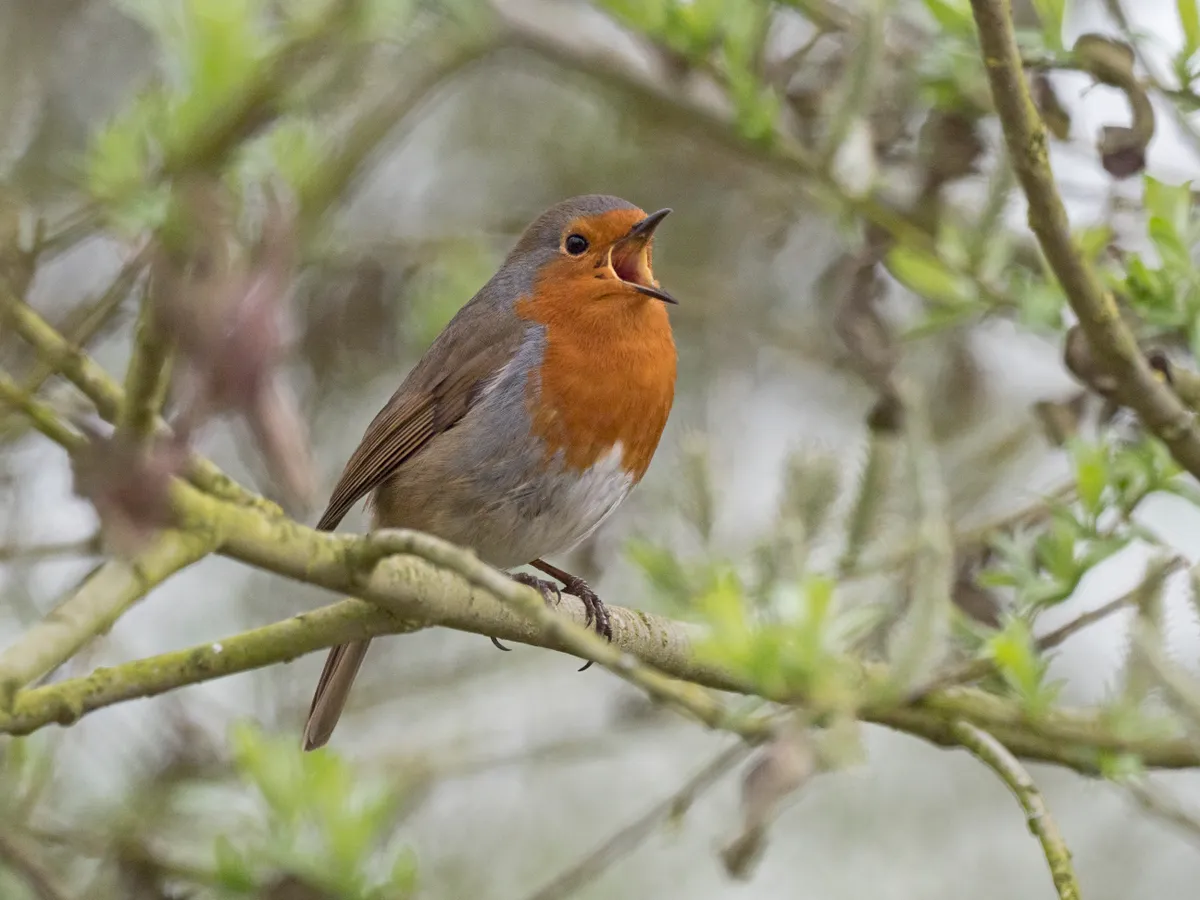
Warblers of the UK
Blackcap
Sylvia atricapilla
Common. March-October, a few in winter. 1.1 million pairs in UK.
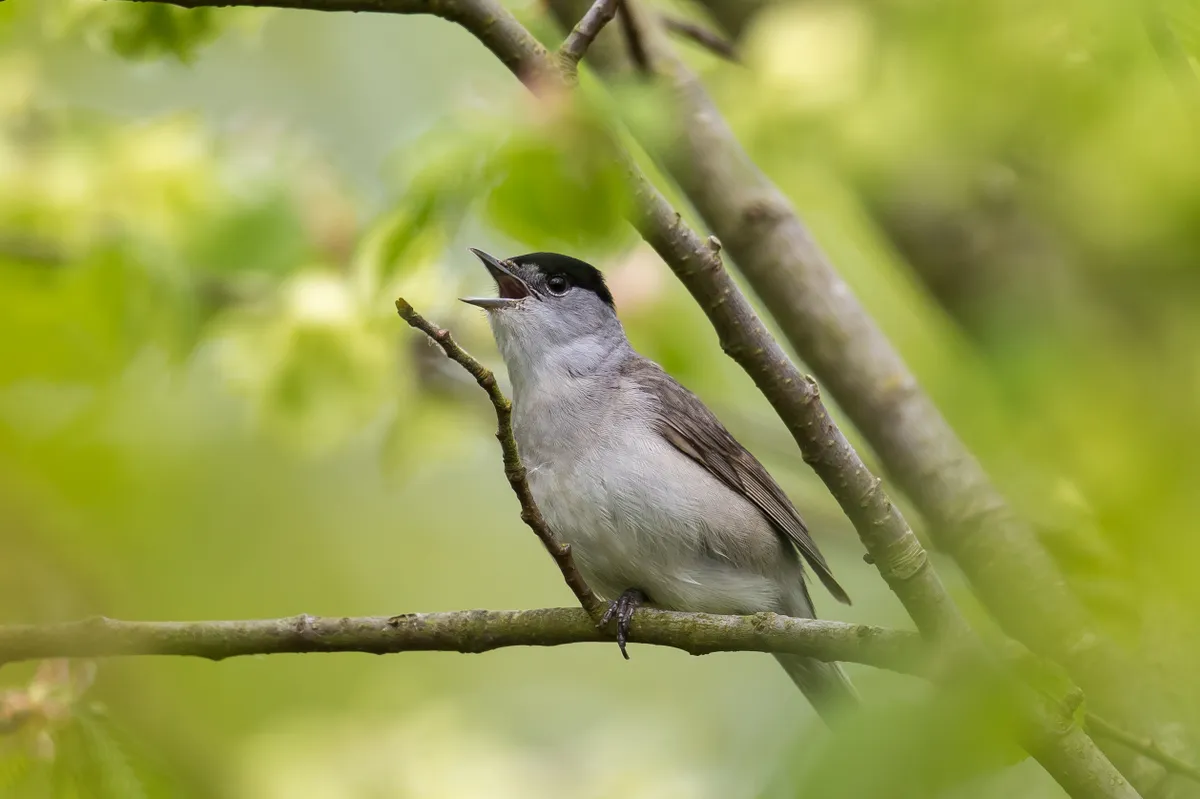
That true miracle, an easily identified warbler, with a distinctive cap that is black in the male and caramel-brown in the female. The only warbler that visits feeders in gardens, where it is aggressive. The song starts hesitantly but gets better, stronger and flutier. In summer a bird of woodland and edge.
Cetti's warbler
Cettia cetti
Scarce. All year. 3,450 singing males.
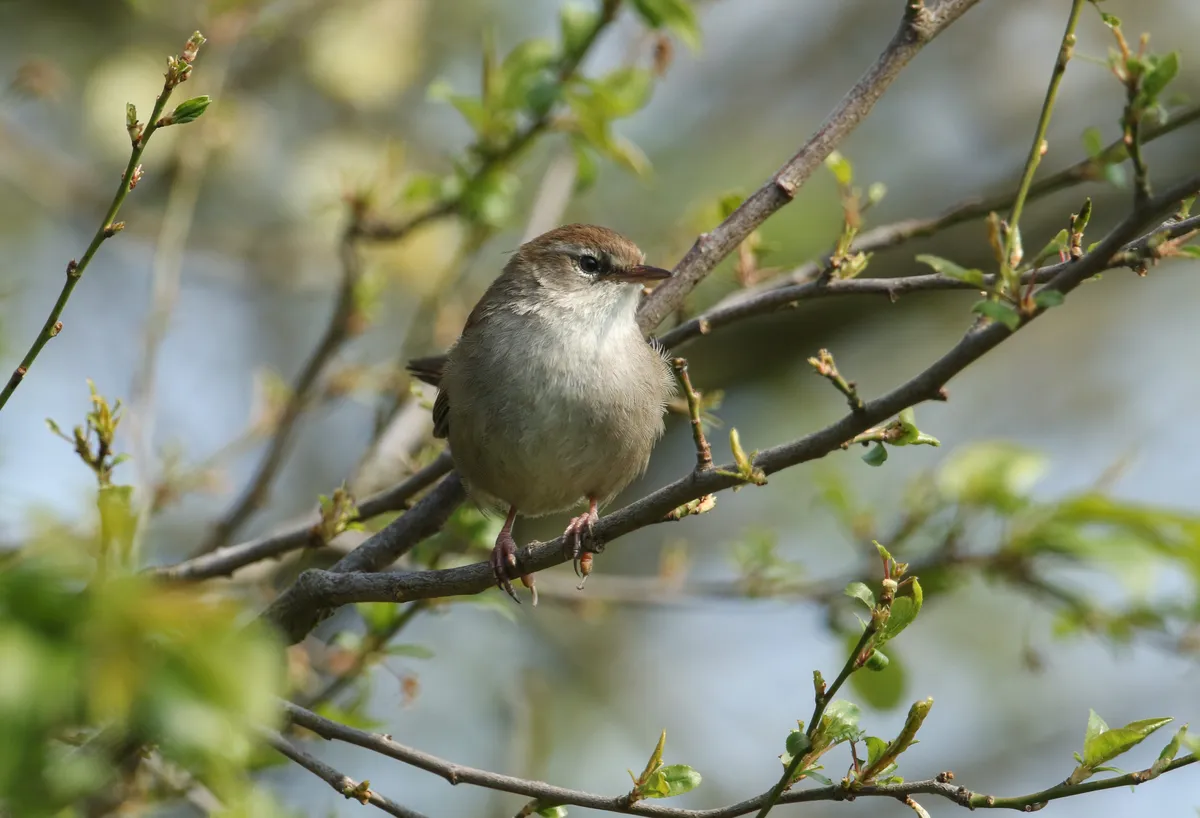
First found breeding in Britain only in the 1970s, this is a recent colonist of dense waterside vegetation, mainly in southern Britain. It has an astonishingly loud, explosive song, like a boorish nightingale. Famously hard to see, but if you manage, it’s very warm brown with a large tail.
Chiffchaff
Phylloscopus collybita
Common. Mainly March-October, a few in winter. 1.6 million pairs.
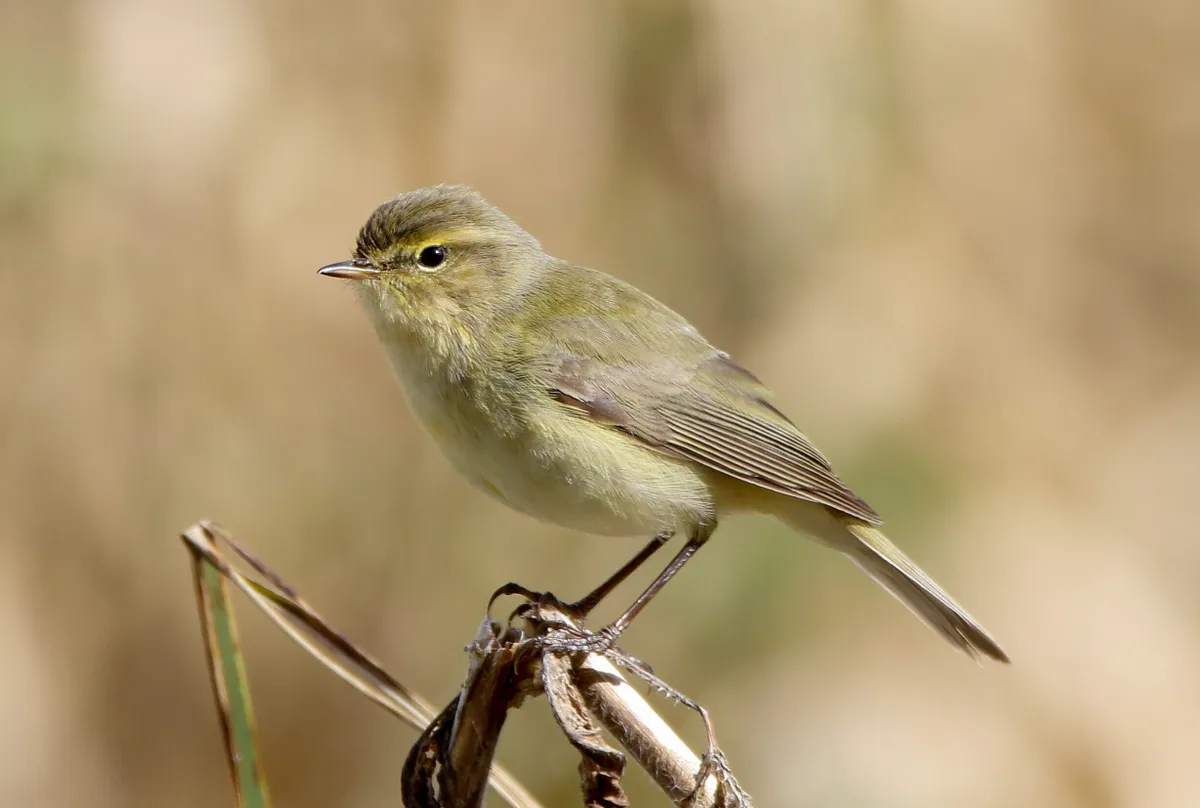
A wonderful sound of spring, the repeated “chiff, chaff” phrases are often heard on leafless treetops or flowering willows from March onwards. It also sings persistently right through to July. The chiffchaff is a waif of a bird, olive-green and undistinguished, but restless and flitty and quite easy to see. Mainly in woods with tall trees.
Garden bird guide
Help your garden birds stay healthy throughout the seasons with our expert guide on how to care for wild birds, including the best foods to feed the different species and tips on how to attract birds to your garden.
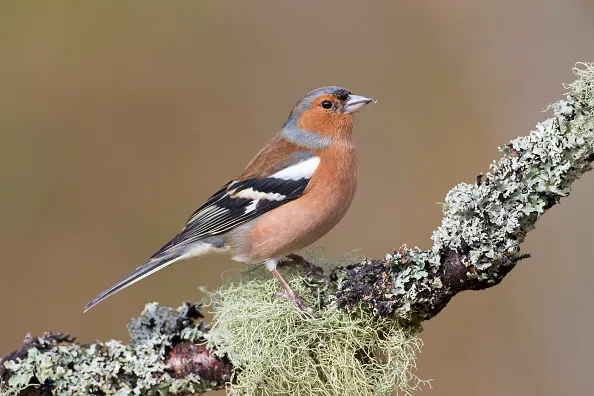
Dartford warbler
Sylvia undata
Rare. Amber List of Conservation Concern. Resident. 1,700 pairs.
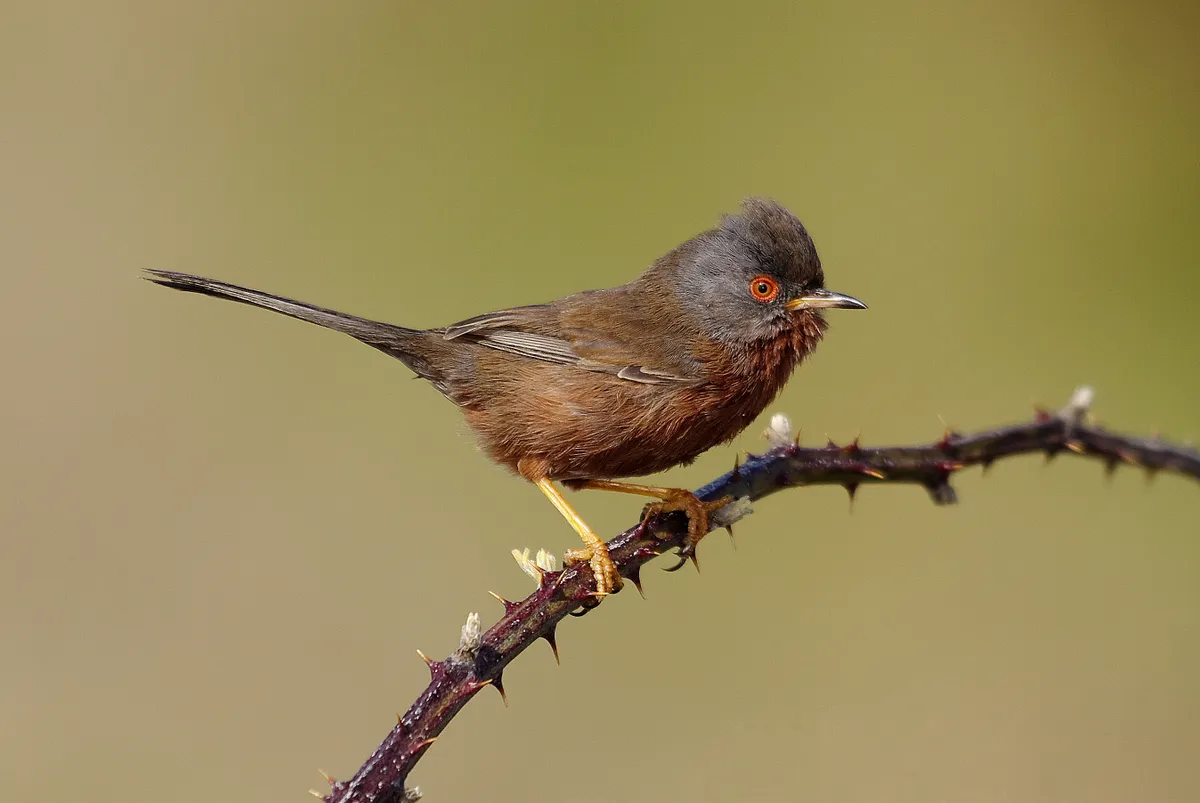
Its unusual shape and colour, a long tail with a tiny body attached and with raspberry red underparts and a red eye, make it look special and rare – and it is. Very much a bird of lowland heaths, attracted by the heather and gorse combination in which it skulks, making it very hard to see.
Garden warbler
Sylvia borin
Fairly common. April-August. 145,000 pairs.

This is the classic small brown bird with, famously, no obvious identification features at all. It does, however, have a wondrous, lively, babbling song, almost always given out of sight in thick vegetation. It is very much a bird of tall scrub, not woodland and – despite its name – definitely not gardens.
Grasshopper warbler
Locustella naevia
Uncommon. Red List of Conservation Concern. April- October. 9,750 pairs.

It comes and whispers, giving a strange, insect-like song, like an angler’s reel or a freewheeling bicycle. A very tricky bird to see, which walks along the ground to feed, sings from cover and also, like several warblers, sings at night. But its freckles and streaks, as well as its heavy tail, are distinctive.
Guide to tit species in the UK
Learn more about the different types of tit species in Britain and how to tell them apart with our ID guide, which includes blue tits, great tits, crested tits, willow tits, long-tailed tits, marsh tits and coal tits.
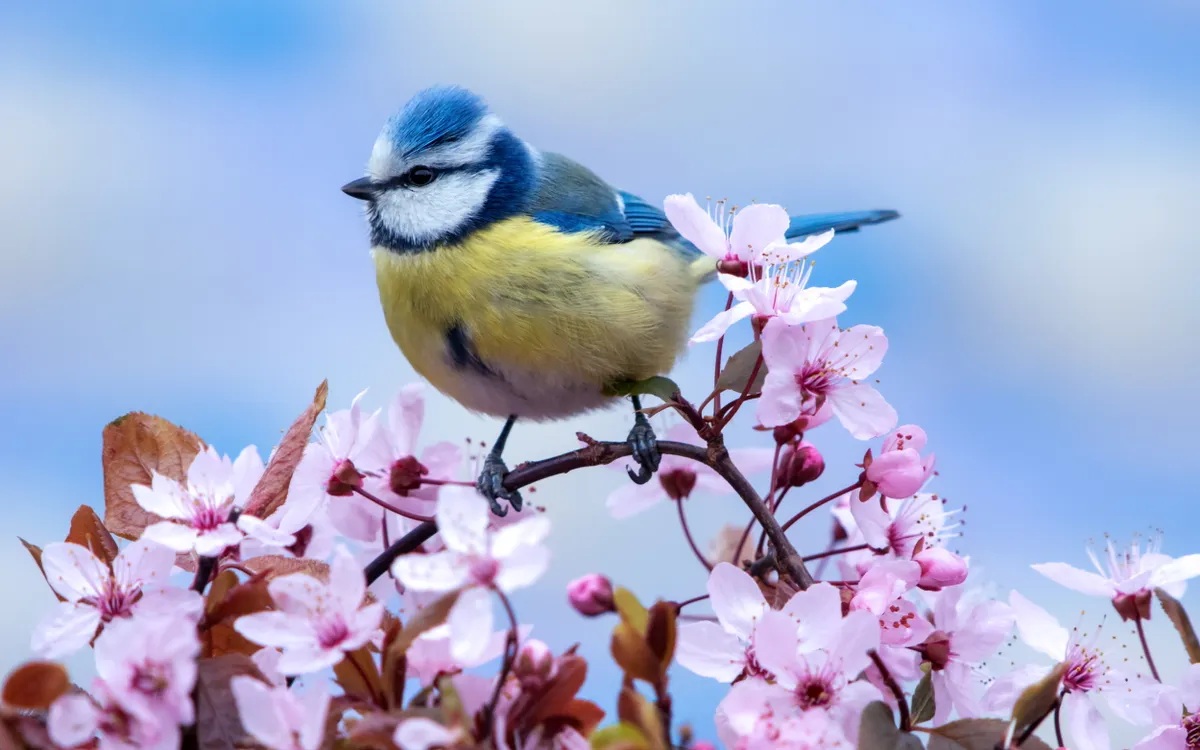
Lesser whitethroat
Sylvia curruca
Scarce. April-October. 79,000 pairs.
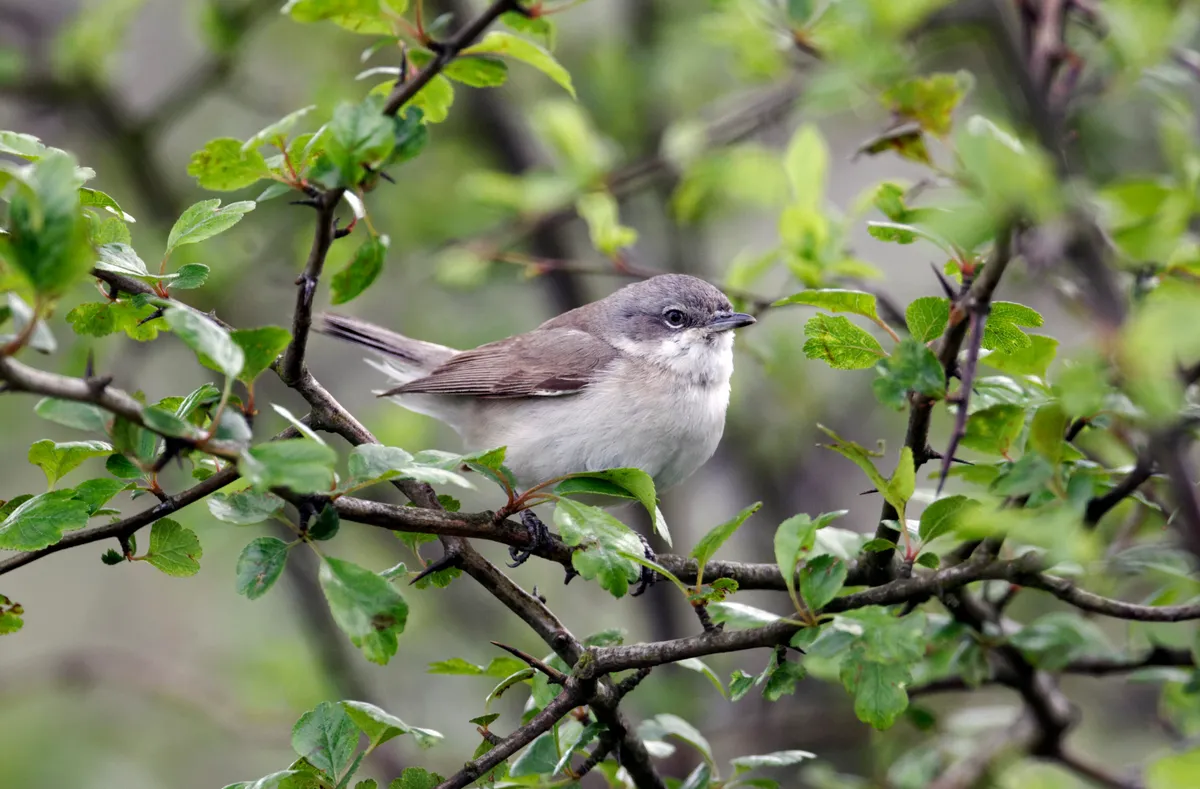
Like a whitethroat scrubbed up for a party, the lesser whitethroat is pristine white below and darker about than its relative, with black, not pink legs. A tricky, very skulking bird of tall scrub. The song is an odd rattle, and the bird moves around between song phrases, making it a nightmare to pin down.
Reed warbler
Acrocephalus scirpaceus
Common. April-September. 130,000 pairs.
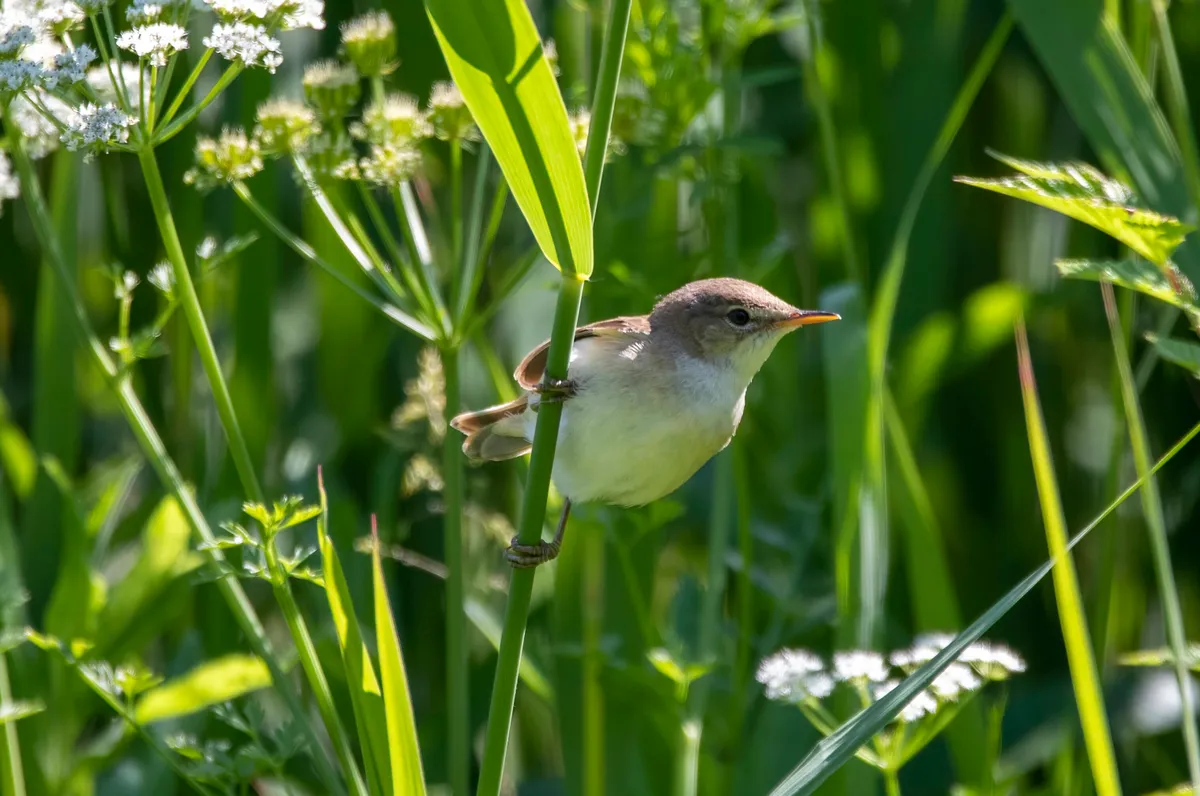
Find the reeds, find the reed warbler, a bird with very specific habitat requirements; it binds its nest between reed stems over water. Spring marshes resound to its grumpy, very rhythmic song, and it isn’t too hard to see this sharp-beaked and arrow-headed bird singing from a reed top or flying between stands of its favourite plant.
Thrushes of Britain
There are six species of thrush in the UK – this BBC Countryfile Magazine guide looks how to identify them, calls, diet and where and when they can be seen.
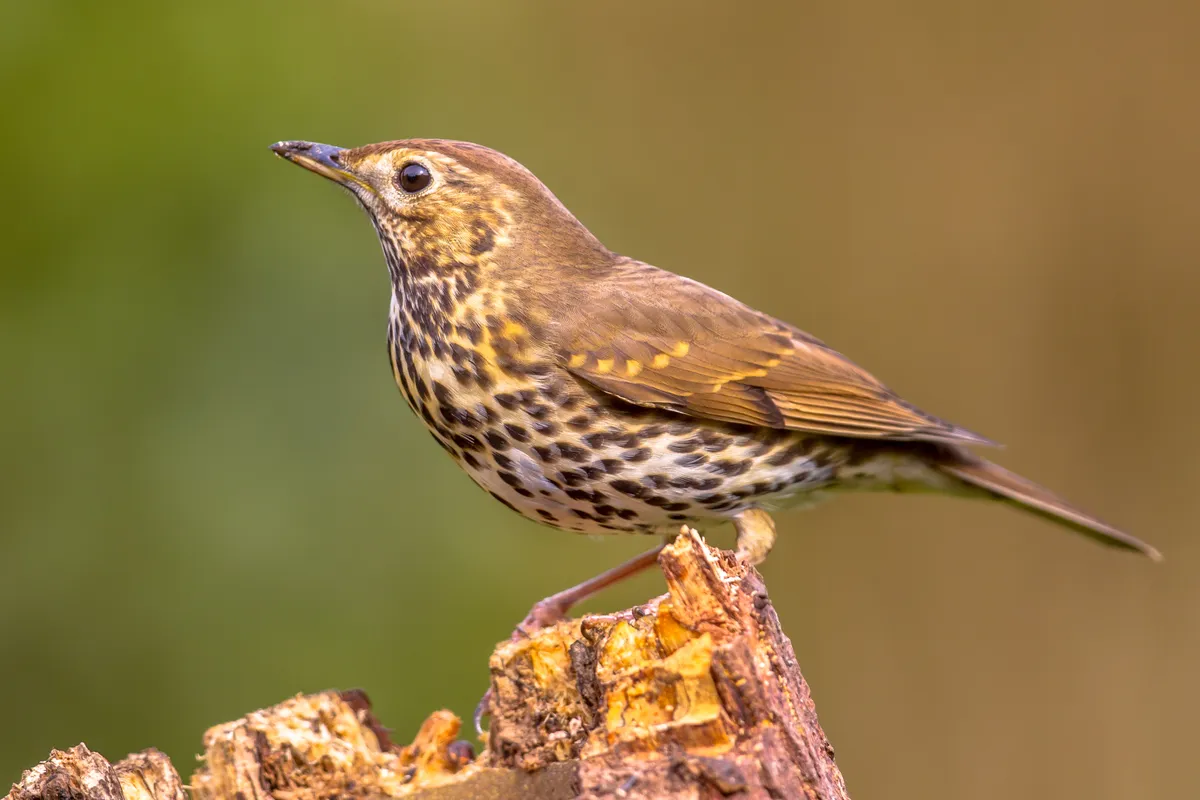
Sedge warbler
Acrocephalus schoenobaenus
Common. April-September. 220,000 pairs.
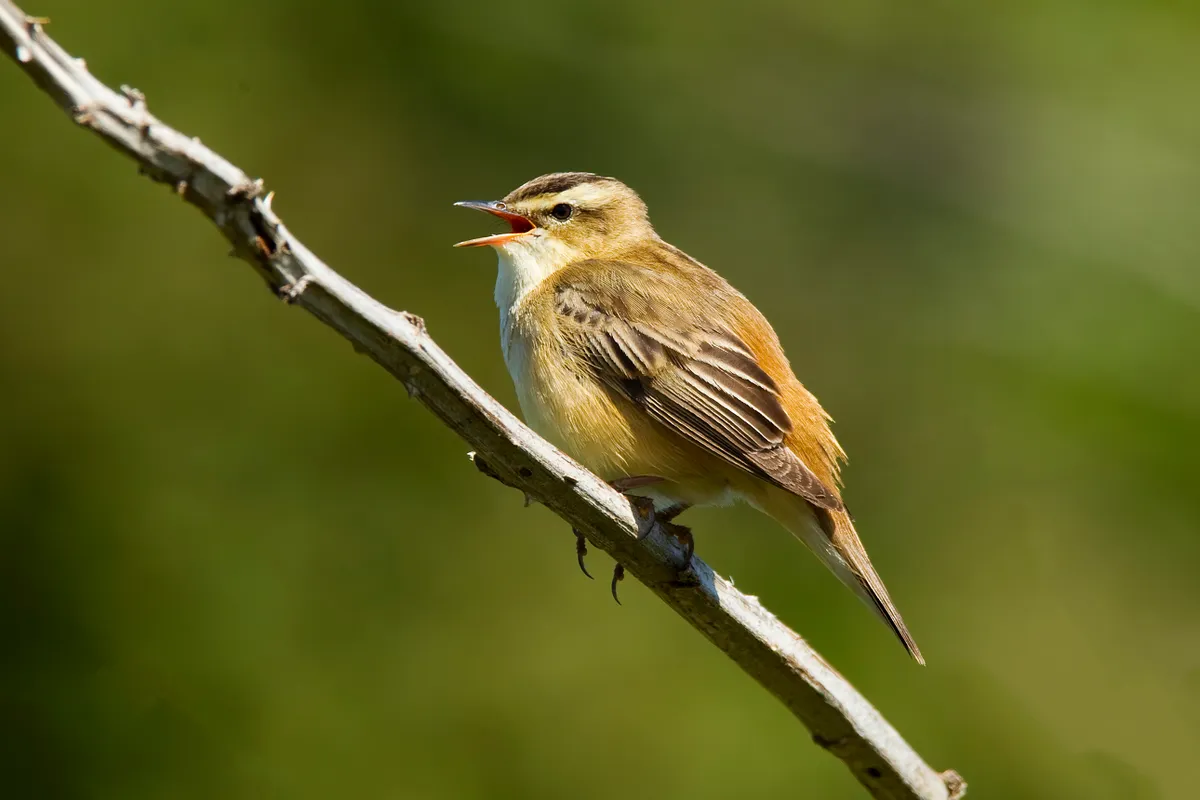
A reed warbler on steroids, the effervescent sedge warbler has a wildly fluctuating, turbo-charged song with lots of imitations, and the singer often launches from its perch on a short song-flight. Similar in shape and size to reed warbler, it is easily distinguished by its obvious whitish eyebrow, and a few extra streaks on the back.
Whitethroat
Sylvia communis
Common. April-October. 1.1 million pairs.

A zestful, restless and sun-loving bird, the whitethroat is often seen perching on a bush-top singing its very short, scratchy song, a real sound of summer. Easier to see than many warblers, look out for the warm brown wings, pale below and with the eponymous white throat, making a singing male look as though it has applied shaving-foam.
Willow warbler
Phylloscopus trochilus
Common, but Amber List of Conservation Concern. April-September. 2 million pairs.
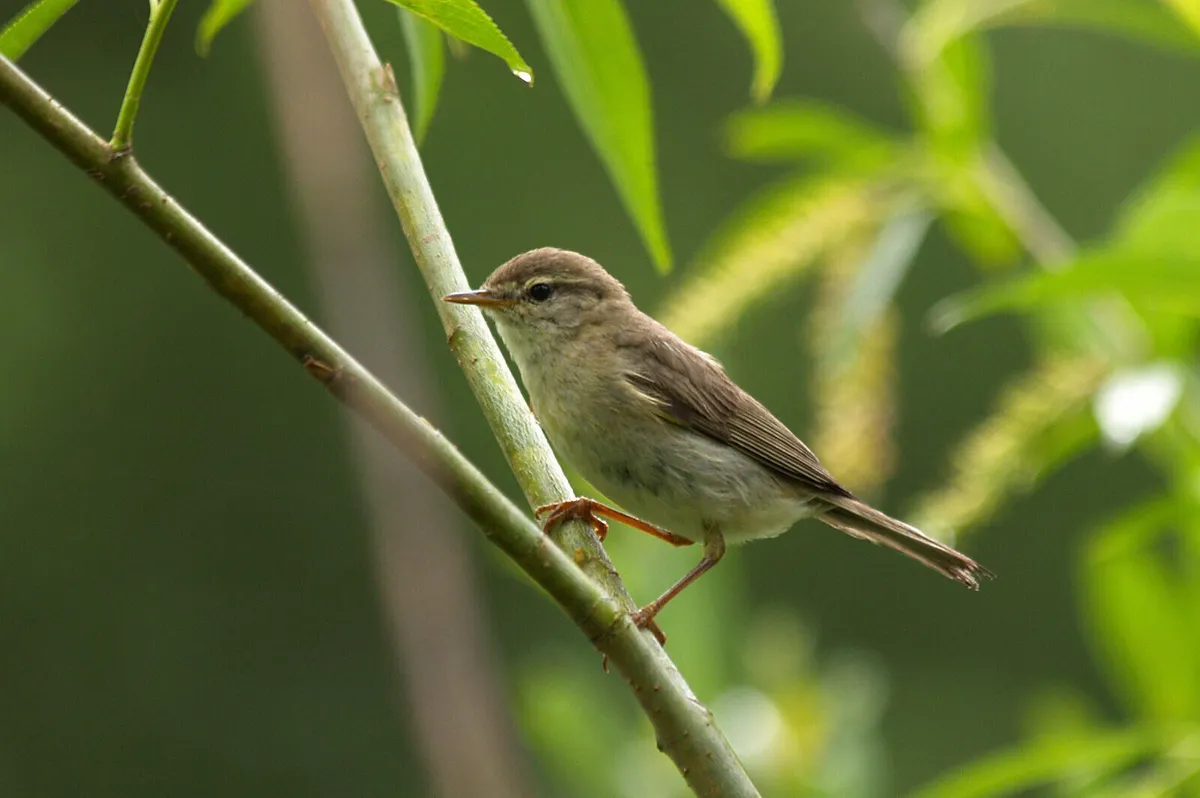
The chiffchaff is lovable, but to many it is the willow warbler’s gorgeous, gentle song, a soft lilting down the scale, that proves spring is really here. A small, greenish bird the size of a tit, it is easily missed among the fresh spring leaves of birches and willows. Commonest in the north.
Wood warbler
Phylloscopus sibilatrix
Scarce. Red List of Conservation Concern. April-August. 6500 pairs.

The smartest of the small green warblers, with bright yellow on its face, brilliant beech-green wings and a white belly. Its most obvious song is a shivering trill, like a spinning coin coming to rest, but it also makes a series of doleful whistles. Mostly found in western and northern sessile oak woods, but fast-declining.

